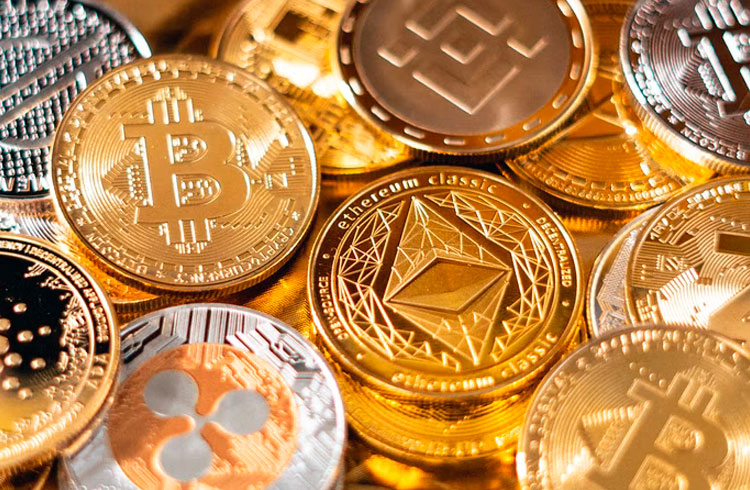DeFI: What is Decentralized Finance?
5 min readDeFi (Decentralized Finance) — the idea that open source decentralized software, such as blockchain, can transform the traditional financial world, its services and applications.

Perhaps the most popular application of DeFi is Bitcoin. A vast network of miners, distributed all over the world, commit computing power to allow Bitcoin’s network to operate. While Bitcoin is limited to being a virtual payment, remittance system and unit of account, the subsequent development of Ethereum and smart contract technology, significantly expanded the realm of possibilities. This next generation of fintech seeks to disintermediate and democratize a system that has historically been centralized and closed off.
What Are the Benefits of DeFi?
The main goal of DeFi is to create a unified and permissionless banking and monetary system on top of which decentralized and censorship-free products could be developed. The decentralized applications built in this system are called DApps. Instead of running on a centralized server, they run on a peer-to-peer network with no central point of failure. This is quite different from centralized applications that most of us use every day such as Uber, Netflix, YouTube and every social media platform. Such applications are built with three key principles in mind:
Open Source & Interoperability: The commitment of software developers and the systems they create to share information with one another openly.
Inclusion & Accessibility: Enabling access to the financial system and its vital offerings, such as, mortgages, insurance and business loans to anyone in the world. With over 1.7 billion people still unbanked today, such applications could have a dramatic impact on the planet by removing the barriers that have plagued these people for decades.
Transparency: The availability of the same information to all participants with an emphasis on the preservation of individual privacy. In a DeFi system, governments and institutions cannot restrict information, mislead, sensor or silence the people they are meant to serve.

What Are DeFi Applications Used For?
While the full potential of decentralized financial applications is still some years away, there are already many different applications that are in use today. In third world countries, DApps are attempting to provide more life-essential functions such as lending and payments. In more developed countries with fully functioning banking systems, decentralized applications are primarily being used for trading, investing, gaming and gambling. The current biggest use cases are:
Loans & Lending: While traditional lending requires one to go an individual bank to borrow money, a decentralized financial application approach allows a borrower to utilize a wider range of lenders.
Stablecoins: These are digital assets that offer protection against the volatile nature of the markets. They are pegged to underlying assets, such as the US dollar, and allow traders and investors a temporary stable store of value and unit of account when trading cryptocurrencies.
Payment Systems: Applications like Bitcoin that tend to have their own digital coins or tokens that are used to facilitate transactions, storage etc.
Tokenization: This refers to placing real-world physical assets, such as commodities, real estate, art etc., onto the blockchain. Such a process allows for the benefits of fractional ownership of physical and non-divisible assets while eliminating many overhead, compliance and middlemen costs associated with these industries.
Financial Exchanges: Decentralized exchanges allow peer-to-peer trading of assets on platforms where users hold their funds along with their private keys. This is a stark contrast to centralized exchanges, which are constantly at risk of hacks and other issues.
What Are Examples of DeFi Applications?
Since the bull market of 2017, projects that withstood the test of time have blossomed from mere whitepaper concepts and speculative dreams to operational applications. Below are examples of some of the most prominent ones in the blockchain and cryptocurrency space.
MakerDAO : A decentralized cryptocurrency for collateralized crypto backed assets such as the Dai stablecoin.
Lightning Network : A secondary layer that has been built on top of Bitcoin’s blockchain. Perhaps one of the most promising applications, the lightning network was created to allow faster transactions with cheaper fees on Bitcoin network. In recent months it has grown quite extensively hitting above a 10 million dollar network capacity.
Augur: A decentralized prediction market that runs on the Ethereum network. On this platform, the possibilities of what one can bet on are virtually limitless and include everything from political events to weather forecasts.
Compound : A decentralized lending market for crypto assets. It claims to offer more favorable terms, instant liquidity and repayment “at your own pace.”
dy/dx : A decentralized trading platform built on top of the Ethereum blockchain that allows for margin and leverage trading.
Cryptocurrency Wallets: Ethereum and ERC20 wallets (such as Jwallet) enable anyone to transact and store Ethereum and ERC20 tokens safely.
bZx: A decentralized platform for margin trading. The company is attempting to provide greater liquidity to the cryptocurrency space by utilizing liquidity pools using tokenized margin loans.
CDx : A decentralized protocol for tokenized credit default swaps. Investors can hedge exchange risk, insure against hacks and trade with confidence.
Uniswap: A decentralized protocol for trading Ethereum and ERC20 tokens
8x Protocol: A decentralized subscription payment platform to help businesses with payroll, taxes and reporting
0x & Loopring: Allow for the development of DEXs (decentralized exchanges).
Augmint: A stablecoin pegged 1:1 to and backed by the Euro.
Dharma: A decentralized application enabling tokenized debt-based lending.
Digix: A digital representation of tokenized gold on the Ethereum network with DGX tokens, where 1 DGX represents 1 gram of gold.
Bloom: An Ethereum based decentralized credit rating and verification protocol
Airswap: A decentralized peer-to-peer trading platform built on top of Ethereum
Ultimately, DeFi is making many of the services we know today cheaper, faster and more efficient. By leveraging decentralized technology to cut out intermediaries and bureaucracy, these financial applications are broadening access to the financial system. Eventually, DApps will enable access to essential financial services to billions of people previously excluded from the services we take for granted. Still, many consensus-based applications have centralized components that often are not as transparent as their makers would like us to believe. While growing pains persist, it is exciting to see where the development will go, and Jibrel is excited to be part of such a promising future!
You might also like: Bitcoin Mining Software Guide






